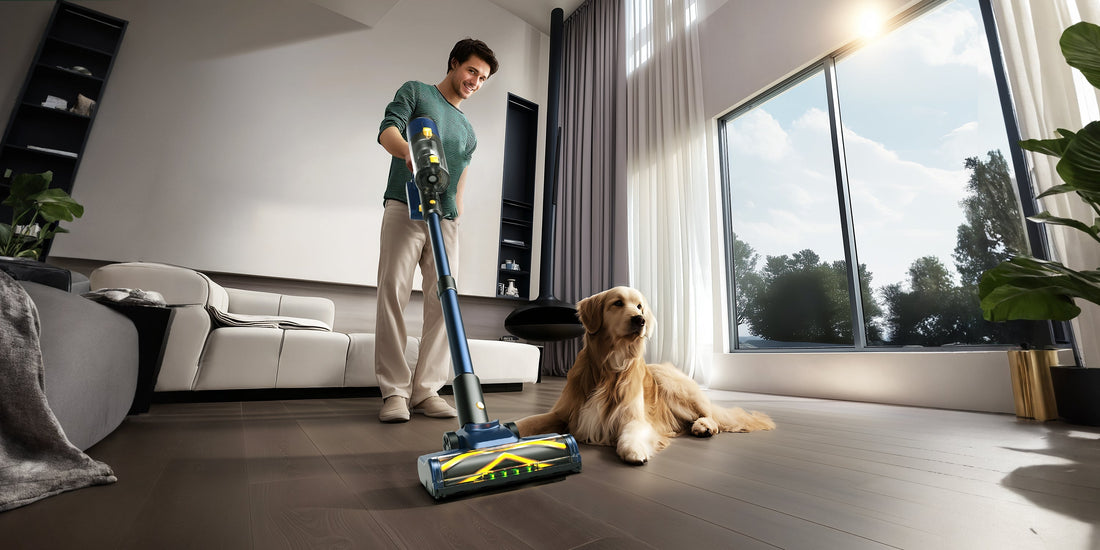That heart-sinking moment. A glass of red wine tips over, a blob of cooking oil splatters, or a pen rolls across the floor leaving an inky trail. On hard floors, spills aren't just messy—they can become permanent residents if not treated correctly.
But before you resign yourself to a life with a stained floorboard or a discolored tile, take a deep breath. Most stubborn stains can be defeated with the right knowledge and a gentle touch. The key is to act fast and use the correct technique for both the stain type and your floor type. Let's break down the battle plan against the most common hard floor offenders.
First Things First: The Golden Rules of Stain Removal
Before we dive into specific stains, remember these three commandments to avoid damaging your floors:
-
Blot, Never Rub: Rubbing a stain grinds it deeper into the surface. Always use a clean, absorbent cloth to gently blot up as much of the spill as possible.
-
Start with the Mildest Solution: Begin with water and a mild dish soap. Harsh chemicals should be a last resort and should always be tested in an inconspicuous area first.
-
Know Your Floor: The finish on your hardwood or the sealant on your tile dictates what it can handle. When in doubt, consult your flooring manufacturer's care instructions.
The Usual Suspects: A Stain-by-Stain Guide
The Dreaded Red Wine Spill
-
Act Fast: The quicker you address it, the better.
-
The Solution: For sealed hardwood, tile, or laminate, mix a solution of one part dish soap to two parts hydrogen peroxide (3%). Dampen a cloth with the solution and blot the stain. For fresh spills, sprinkling salt over the wine can help absorb it before you clean.
-
Why it Works: The peroxide gently bleaches the color without damaging the floor's sealant.
The Greasy Kitchen Splatter
-
The Challenge: Grease binds to surfaces and attracts more dirt.
-
The Solution: Create a paste from baking soda and water. Apply it to the stain, let it sit for 10-15 minutes to absorb the grease, then wipe away with a damp cloth. For tougher grease, a small amount of isopropyl alcohol on a cloth can cut through it effectively.
-
Why it Works: Baking soda is a gentle abrasive and absorbent, while alcohol dissolves oily residues.
The Ink Blot or Marker Streak
-
The Panic Moment: Ink can feel like a death sentence.
-
The Solution: Dampen a cotton ball with isopropyl alcohol (rubbing alcohol) and gently dab the stain. The ink should start to transfer to the cotton ball. Switch to a clean section frequently. Important: Test this on a hidden spot first, as alcohol can damage some floor finishes.
-
Why it Works: Alcohol breaks down the dyes in ink, allowing them to be lifted away.
Water Rings and White Spots
-
The Culprit: These are often caused by moisture trapped under the finish of wood floors.
-
The Solution: Try the gentle heat method. Place a clean, thin cloth over the spot and run a warm (not hot) iron over it for a few seconds. The heat can help evaporate the moisture. If that fails, a small amount of toothpaste (non-gel) or mayonnaise rubbed gently onto the spot with a cloth can sometimes fill the microscopic gaps causing the white appearance.
-
Why it Works: Heat displaces moisture, while the oils in mayonnaise or the mild abrasives in toothpaste can camouflage the mark.
Prevention is the Best Cure: Maintain a Clean Canvas
The best way to fight stains is to stop them from setting in the first place. A consistent cleaning routine is your first line of defense. Regularly removing dust, dirt, and grit prevents them from being ground into the floor, acting as an abrasive that makes stains more likely to form.
This is where having the right tools makes all the difference. A powerful and versatile vacuum is essential for daily maintenance, especially one that can seamlessly transition from dry vacuuming to damp mopping to tackle spills before they become stains.
For instance, the Vactidy Blitz V12 Cordless Vacuum Cleaner (marketed as Vexilar V12 in certain international markets) is designed for this proactive approach. Its 2-in-1 vacuuming and washing capability means you can quickly switch from sucking up dry debris to lightly damp-mopping a fresh spill, preventing it from becoming a permanent mark. With a strong 48 kPa suction power, it ensures no gritty particles are left behind to scratch the floor's surface, and the high-precision filtration system captures fine dust that can dull the appearance of your floors over time.
While it's your go-to for quick clean-ups and maintenance, remember that for set-in stains, the manual techniques above are your best bet. But for everything else, having a reliable tool makes floor care remarkably effortless.
Spills happen. Stains don't have to.

